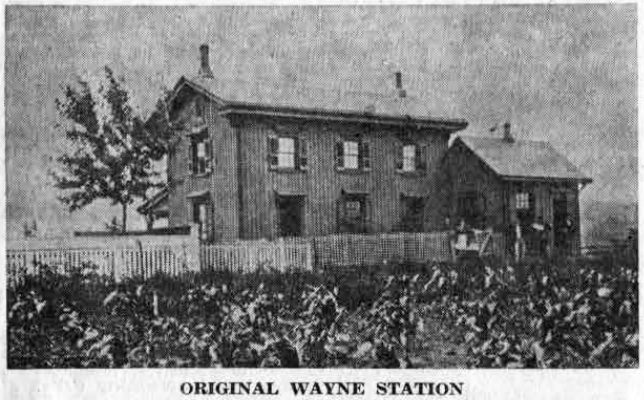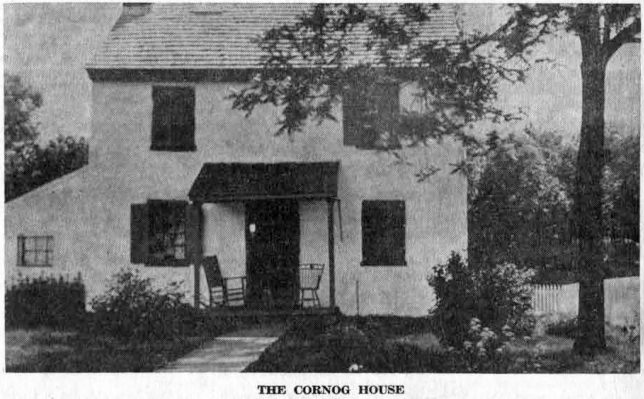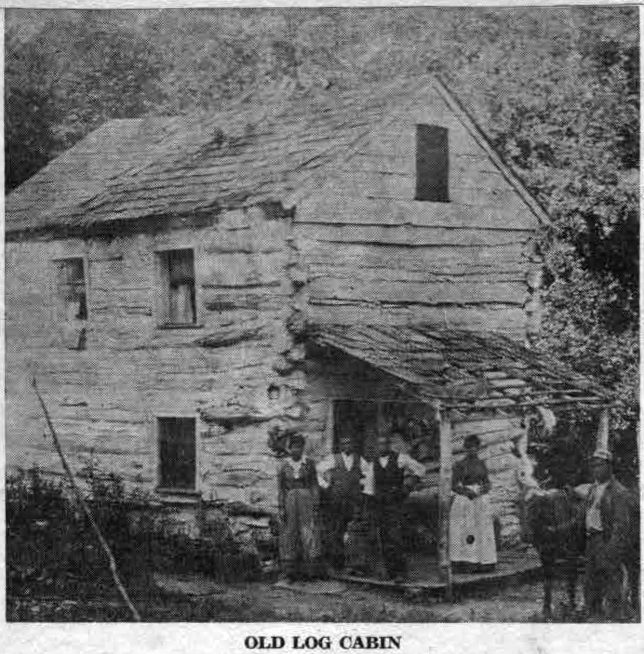The three pictures illustrating this week’s column show landmarks of an earlier Wayne. The second and third pictures are of buildings that live only in the memories of some of the really old “old timers” of this section. The first picture, although it may be recognized by few, is of a building that has been destroyed so recently that some of its foundations are still standing amid its scattered timbers.
This picture was taken in 1870, “when residents swished through a cornfield to catch the 8:15 train to Philadelphia.” The smaller building to the right was the waiting room of the Pennsylvania Railroad’s station at Wayne. The larger building to which it was attached housed the family of the station agent. Railroad tickets were also sold there and it is said that J. Henry Askin, one of the founders of Wayne in the 1870’s, had a private waiting room in this house for his family and himself.
At that time the railroad tracks ran to the south of the present roadbed, thus placing the station to the rear of the Wayne Presbyterian Chapel. The picture was taken from the one-time cornfield that is now a part of the Wayne Hotel property, recently bought by the Wayne Presbyterian Church. The small waiting room building was later transported to Strafford, where it stood until the present building was erected there. After the tracks were moved slightly to the north, the cottage still remained on its original site, later becoming the property of the original station building.
Until 1900 this neat white house with its dark shutters and its picket fence stood on the west side of North Wayne avenue on what is now Charles LeBoutillier property. It was known for many years as the “Cornog House”, since it was built and first occupied by members of that pioneer family of Radnor township. This picture was also taken by Mr. Schultz in the 1880’s.
The picture of this small cabin made of hand-hewn logs is perhaps the most picturesque one yet used in this series of articles. Even in its day and time it must have been unique in this section. So far as can be ascertained it stood back of the First Baptist Church, between Conestoga road and the present Highland avenue, and very close to Johnson’s quarries. The group of five, with a horse belonging to one was evidently especially posed for the picture when it was taken in the 1880’s. There is something very appealing in the figure of the woman at the right with her hands folded over her ample white apron.



